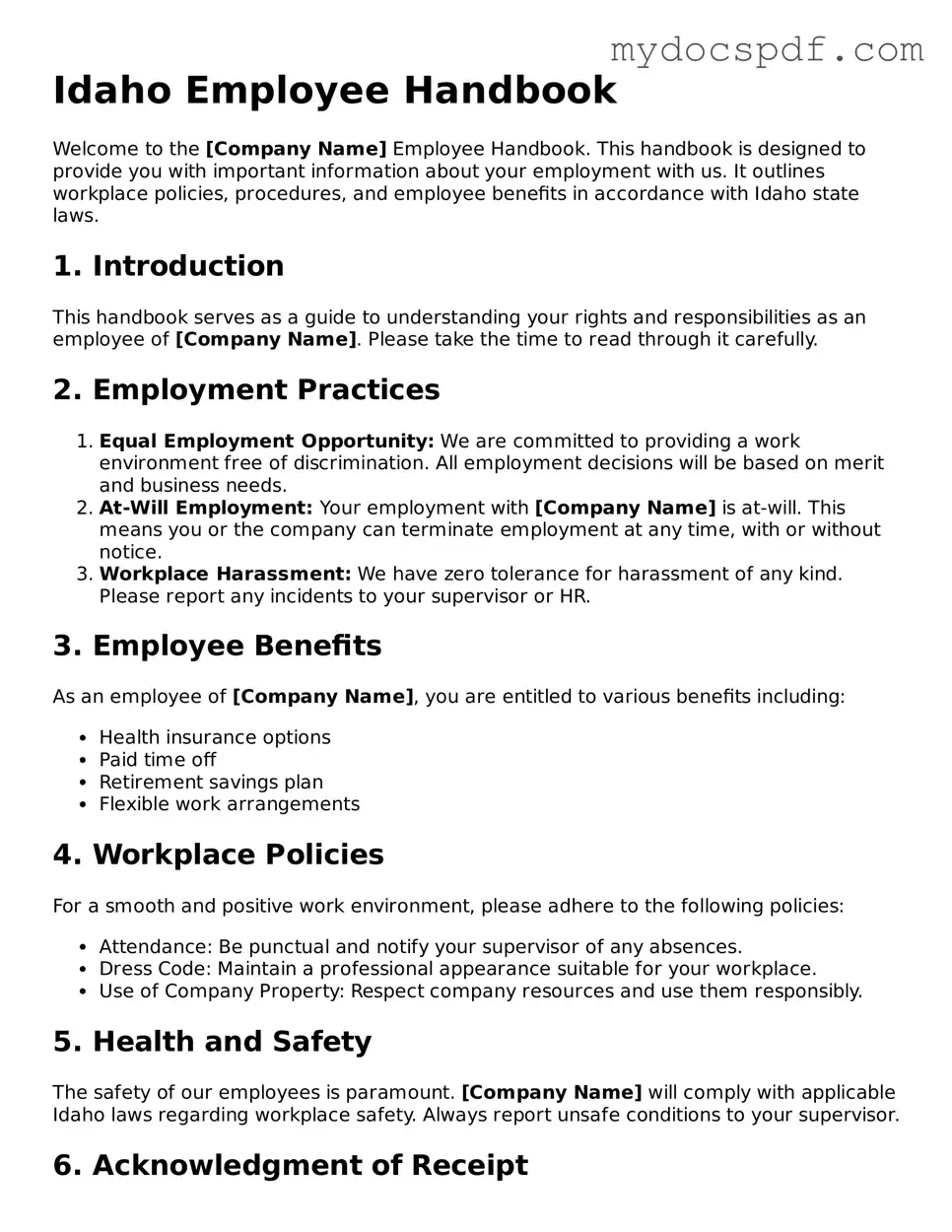Idaho Employee Handbook
Welcome to the [Company Name] Employee Handbook. This handbook is designed to provide you with important information about your employment with us. It outlines workplace policies, procedures, and employee benefits in accordance with Idaho state laws.
1. Introduction
This handbook serves as a guide to understanding your rights and responsibilities as an employee of [Company Name]. Please take the time to read through it carefully.
2. Employment Practices
- Equal Employment Opportunity: We are committed to providing a work environment free of discrimination. All employment decisions will be based on merit and business needs.
- At-Will Employment: Your employment with [Company Name] is at-will. This means you or the company can terminate employment at any time, with or without notice.
- Workplace Harassment: We have zero tolerance for harassment of any kind. Please report any incidents to your supervisor or HR.
3. Employee Benefits
As an employee of [Company Name], you are entitled to various benefits including:
- Health insurance options
- Paid time off
- Retirement savings plan
- Flexible work arrangements
4. Workplace Policies
For a smooth and positive work environment, please adhere to the following policies:
- Attendance: Be punctual and notify your supervisor of any absences.
- Dress Code: Maintain a professional appearance suitable for your workplace.
- Use of Company Property: Respect company resources and use them responsibly.
5. Health and Safety
The safety of our employees is paramount. [Company Name] will comply with applicable Idaho laws regarding workplace safety. Always report unsafe conditions to your supervisor.
6. Acknowledgment of Receipt
Please sign below to acknowledge that you have received and read the [Company Name] Employee Handbook:
Employee Name: [Employee Name]
Employee Signature: ______________________
Date: [Date]
